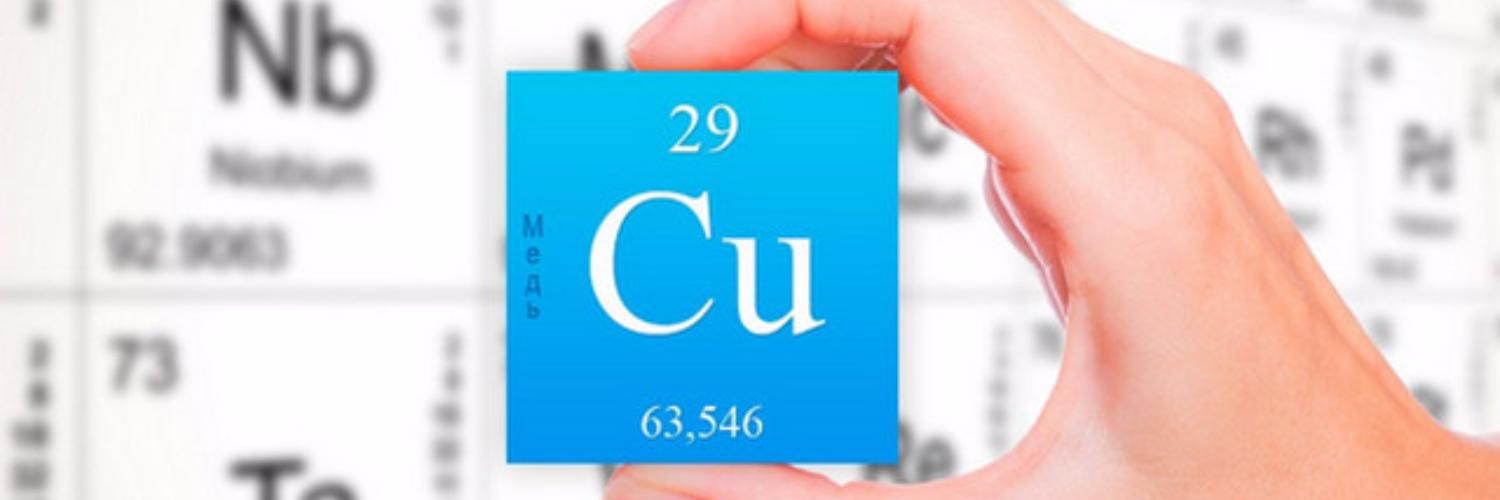Copper is important for the immune system functioning and optimal health. Supplementing diets of the newborn piglets with copper makes possible to improve the daily increment and conversion rates of feed. Choosing the right type of copper determines its presence in the digestive tract, minimizes release into the environment and maximizes the return.
The weaning process is one of the stress factors for piglets. A new environment, habitat, and feed - all this can affect feed intake and growth potential of young animals. Ensuring basic nutritional requirements during this transition is critical to minimizing stress and maximizing feed efficiency, overall health, and productivity.
Ensuring proper early nutrition requires careful attention to the details of the diet. Some elements, although necessary in small quantities, are critical for maintaining the health of young animals. Copper is one of such elements and is important for the immune system functioning, and is also necessary for the various processes of the growing animal's body.
Recent research has helped scientists in a better understanding of the role of copper in the piglets' diet. "We are starting to realize how copper can stimulate a certain gene expression that increases feed intake, which leads to a weight gain increase," says Dr. Yulin Ma, Technical Manager at Novus International. "We’ve found that improving the digestibility of fats with weaned pigs refers to an increased activity of the intestinal enzyme lipase when added to the copper diet."
Increase in average daily weight gain and feed conversion
Ma and his colleagues conducted a meta-analysis of published literature on copper additions to rations of piglets and weaners in the United States, including six studies with different levels of copper incorporation. Their analysis showed that the addition of organic chelated copper (MMHAC Cu) to the weaned pigs increased the average daily weight gain by 3% and the feed conversion by 2.6% compared to inorganic copper sulfate. The probability of diarrhea was reduced by 23% when piglets were fed with chelated copper, and with the addition of pigs for fattening MMHAC Cu, an increased immune response and improved digestibility of nutrients in the main corn-soy diet were obtained.
In addition to the antibacterial effects of copper in the intestine, studies have also shown that MMHAC Cu improved the ratio of the height of the villus to the depth of the glandular cavity and promoted better digestion and absorption of nutrients. In particular, MMHAC Cu improves copper digestibility levels by 42%, dry matter by 8%, crude protein by 9%, phosphorus by 14%, energy by 8% and fat by 10% compared to the baseline diet. The greatest benefit of MMHAC Cu feeding is observed in older pigs, including swine from 28 days or older and from 7 kg or more.
The advantage of organic chelating minerals
Additives of trace elements can work differently in the digestive tract of the animal. For example, when inorganic salts are used as a source of copper, most of the minerals are often excreted with feces and lost through chemical interactions and contradictions with other components of the diet in the gastrointestinal tract. Such losses are the result of a metabolism deficiency, which limits the weight gain of the animal. Chelate minerals help to overcome these problems with digestion.
From the scientific point of view, chelation means that the complexation of microelements is associated with the formation of biologically active substances, at least two coordinate covalent bonds that can be further tested by chemical methods such as X-ray crystallography and Fourier transform IR spectroscopy (FTIR).
Unlike other organic sources of minerals, this chelate creates a stable complex in the acidic pH of the upper gastrointestinal tract, reduces mineral-ligand degradation, helps reduce losses caused by antagonism, and provides the efficient delivery of the mineral to the site of absorption and suction efficiency in the small intestine.

Because of this significant difference, а new category of feed ingredient was proposed by the Novus International company. "The Association of American Official Feed Quality Experts recognized the mineral additive of chelated copper as one of the new classes of minerals," explains Gavin Bowman, CEO of Novus International.
More bioavailability
Over the years, most experiments with piglets have shown an increase in productivity when copper in the diet exceeds 125-150 parts per million, especially during the first eight weeks after the addition of copper. The task is to increase productivity and avoid excess copper from excrement, which creates a significant environmental hazard and is usually caused by the relatively poor availability of copper from inorganic sources.
The key to reducing the excretion of minerals is to optimize their assimilation by increasing their availability. "This can be achieved by reducing the interaction of minerals in various diets and assimilating components such as phytate and fiber, and reducing the possibility of mineral interactions in the gastrointestinal tract," explains Bowman. Bowman says that laboratory tests with a feed additive of chelated copper "clearly show the increased stability compared to other mineral sources."
Since chelated copper is digested better than inorganic mineral additives, the manufacturer can add fewer minerals while maintaining the efficiency of the feed. "By replacing inorganic sources of organic copper in an after-release diet, the manufacturer can maintain a level of productivity, while reducing the level of copper excretion and lowering the cost of copper additions," Bowman comments.
Based on:allaboutfeed.netTransfer:biomedia.rf




